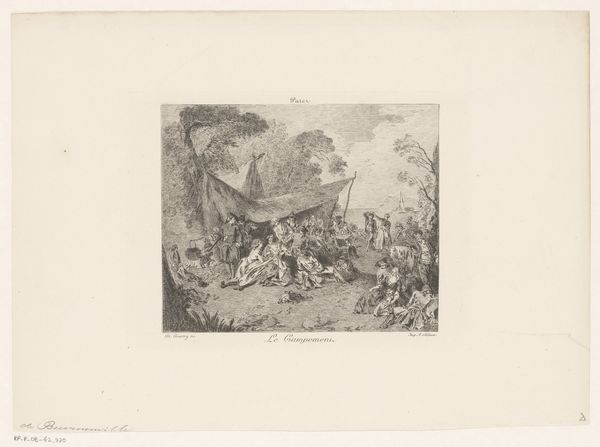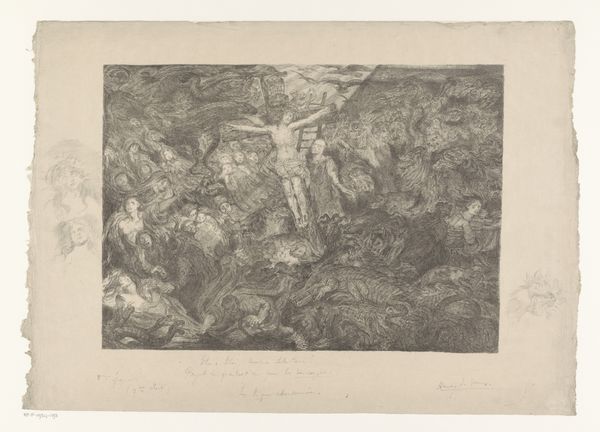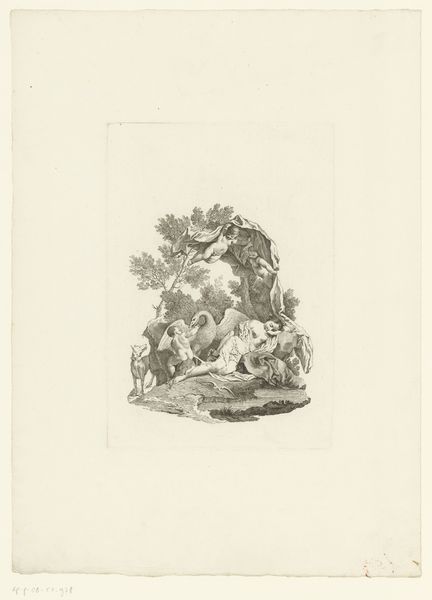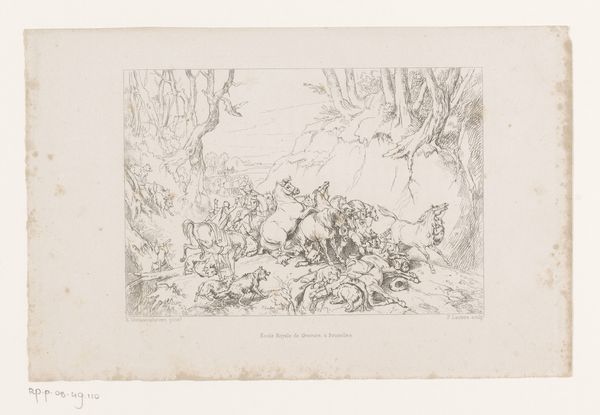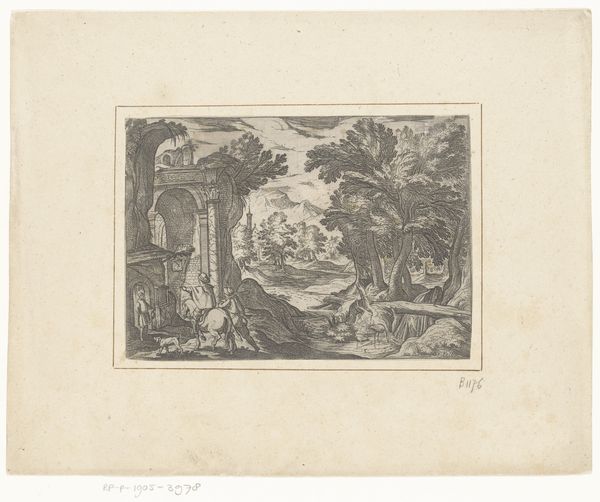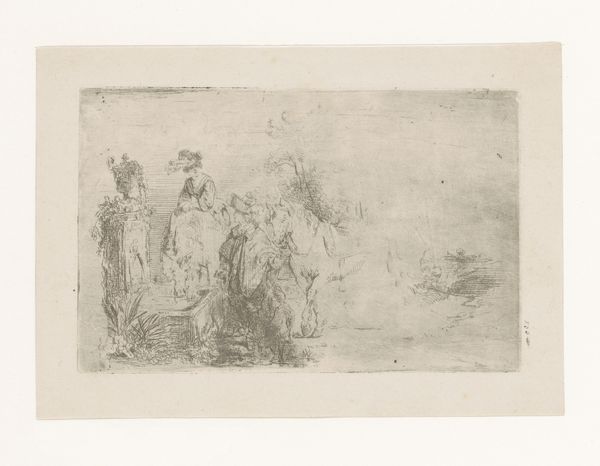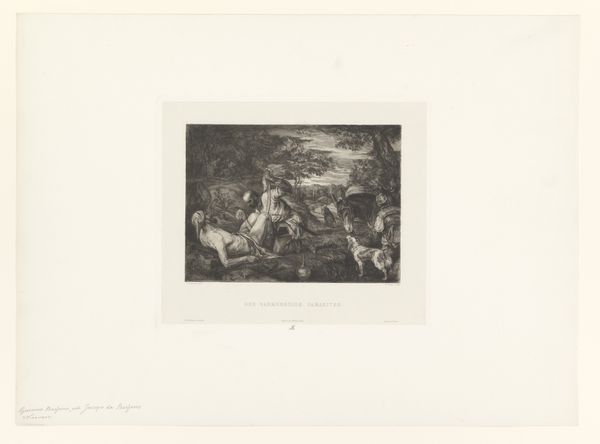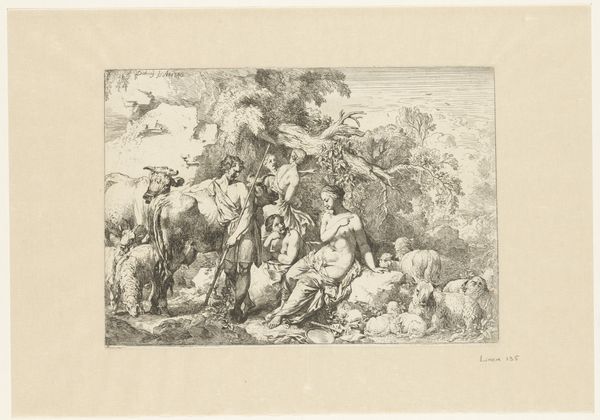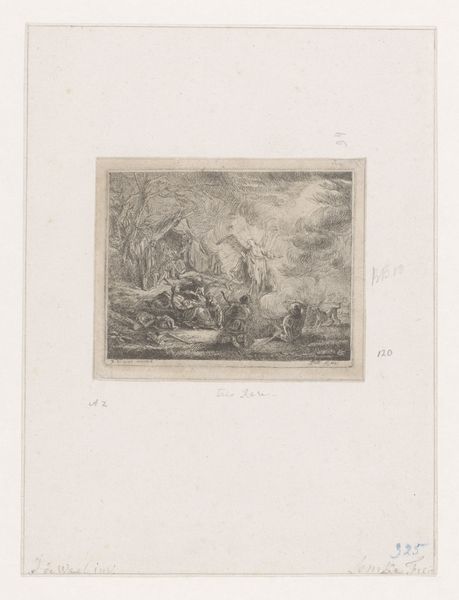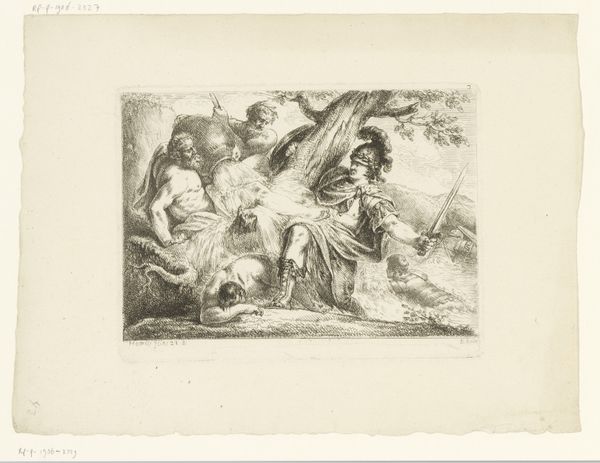
print, etching
# print
#
etching
#
fruit
#
watercolor
#
realism
Dimensions: height 225 mm, width 312 mm
Copyright: Rijks Museum: Open Domain
Curator: Let’s consider this etching by Paul Emile Nicolié from 1870, held here at the Rijksmuseum. It is titled "Stilleven van bloemen, vruchten en wild"—Still Life with Flowers, Fruit and Game. Editor: It’s interesting! There's a dreamlike quality. A table laden with an almost overwhelming abundance, softened by the print medium. It certainly lacks the vibrant color we'd expect. Curator: True. I’m struck by what a material rendering reveals about consumption in this era. Etching allows for such fine detail in depicting these items. Reflect on how this portrays abundance and access. The flowers, fruits, and suggestions of 'wild' game—they signal status and privilege. Editor: And, crucially, it forces us to consider the labour embedded in this representation of plenty. We are not explicitly given information, but behind the scene is an implicit depiction of harvest and agriculture, of human intervention shaping natural resources. This is especially significant considering this artwork has elements of both still life and print media in tandem, and could make use of both reproductive methods of agriculture as well as methods of printing to make many. Curator: Absolutely. What stories do the elements tell? The floral arrangements, particularly the ways they’re contained and cultivated. Look closely: These blooms weren't gathered naturally—they are commodities displayed in vases, emblems of trade and wealth, contained as decoration, as if for consumption through only the eyes. The medium here can be a reflection of our very social understanding of beauty as consumable items. Editor: I agree. And there’s something haunting in its lack of colour. It makes the excess and display more obvious; without pigment, it could comment on a sort of class that’s devoid of colour. Curator: In Nicolié’s work, the etching captures more than just aesthetic value. Editor: The image serves as an allegory for how material goods construct not only status but also identity in complex and nuanced ways. Curator: Precisely, a poignant representation for its time, even now. Editor: An incisive commentary for us as we move towards ecological concerns as well. Thanks to its monochromatic and reproducible design, this makes use question a sense of timelessness in a piece about nature and consumption.
Comments
No comments
Be the first to comment and join the conversation on the ultimate creative platform.
